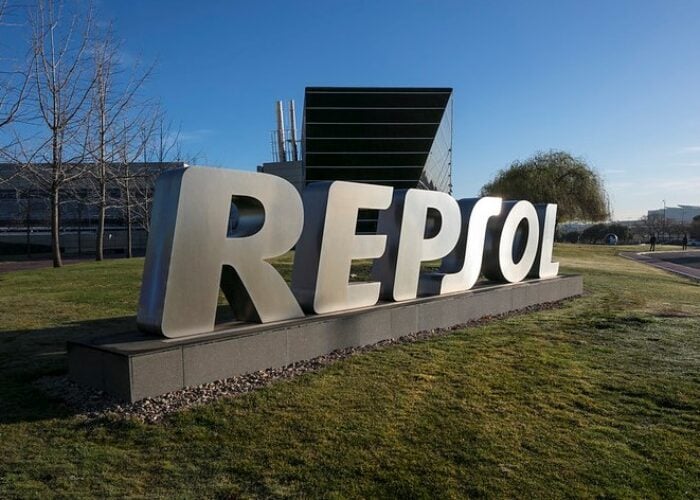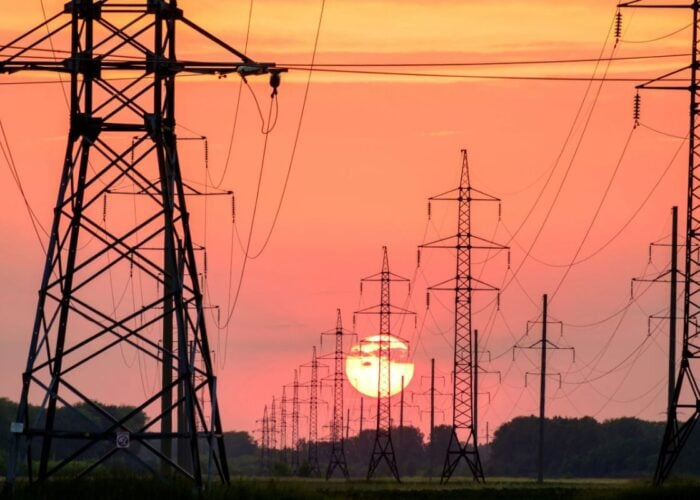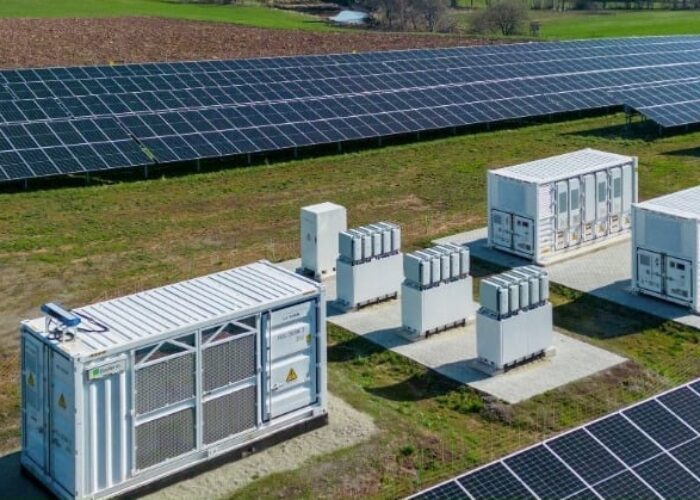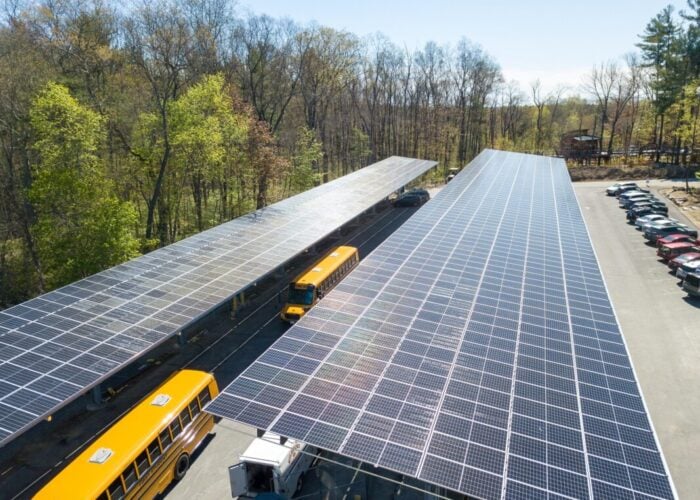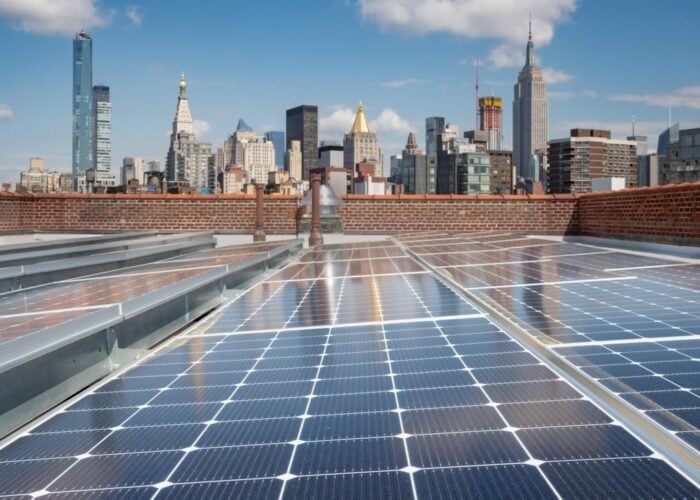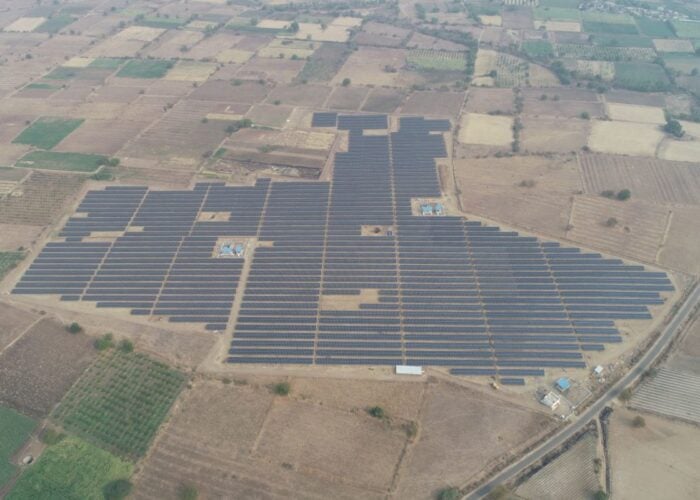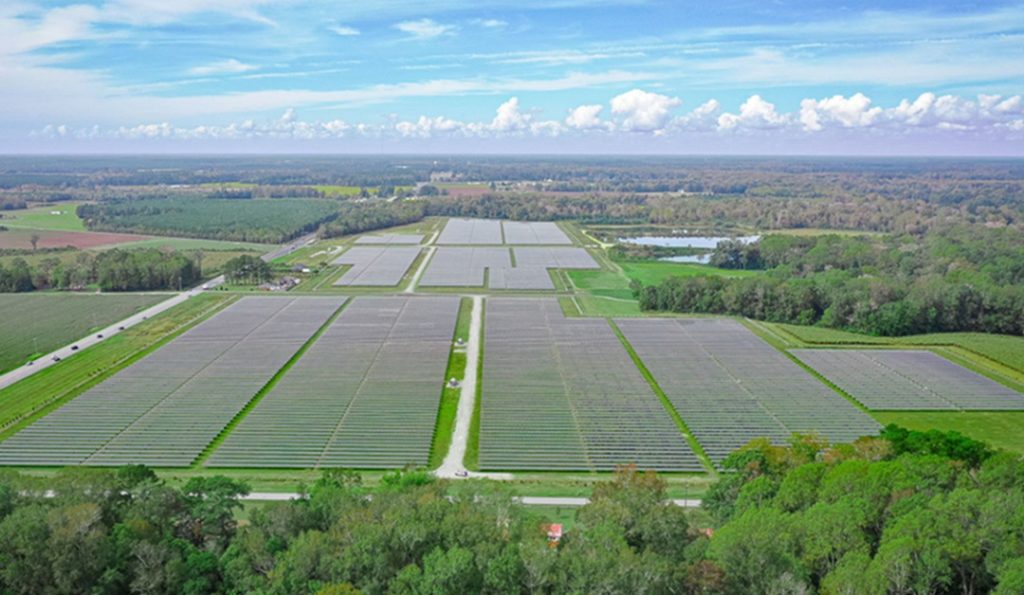
Renewables deployment in the US is at risk of stalling unless distributed interconnection policies are improved to make them more efficient. Fortunately, there are a host of well-developed solutions for many of the major interconnection challenges being seen in the country today, writes Gwen Brown of the Interstate Renewable Energy Council.
Unlock unlimited access for 12 whole months of distinctive global analysis
Photovoltaics International is now included.
- Regular insight and analysis of the industry’s biggest developments
- In-depth interviews with the industry’s leading figures
- Unlimited digital access to the PV Tech Power journal catalogue
- Unlimited digital access to the Photovoltaics International journal catalogue
- Access to more than 1,000 technical papers
- Discounts on Solar Media’s portfolio of events, in-person and virtual
While there are many factors at play in the pace and scale of clean energy deployment, there’s a good case to be made that interconnection – the process by which clean energy projects are approved to safely and reliably connect to the grid – is the most critical.
Every single clean energy project connecting to the distribution grid must receive interconnection approval to move forward. Across the US, significant delays in the interconnection process are posing major challenges for clean energy developers, as well as for states trying to meet ambitious clean energy and electrification targets. Similar to the transmission interconnection process that has been receiving greater attention as of late, it is not uncommon for projects to spend years in distribution interconnection “queues” waiting for approval to interconnect.
Without significant improvements in interconnection policies to make them both more efficient and better aligned with newer technologies, it will be nearly impossible to meet bold climate and clean energy goals. Fortunately, there are well-developed solutions for many of the major interconnection challenges being seen today. Recognition of the critical nature of interconnection reform and commitment from regulators to adopting existing best practices will go a long way toward improving the situation.
In this article, we explore the current state of distributed interconnection in the US and dig into the available solutions to reduce delays and accelerate clean energy development.
Interconnection at breaking point
The Interstate Renewable Energy Council (IREC) is one of the leading public interest stakeholders working to reform interconnection policies on the distribution grid in the US, with the goal of enabling a 100% clean energy future that is reliable, resilient and equitable. For over a decade, and in over 35 states, IREC has engaged in interconnection proceedings, offering expertise on interconnection best practices for safely and reliably integrating distributed energy resources (DERs), like solar and energy storage, into the distribution grid.
Historically, IREC typically saw about two to three states with open interconnection dockets in a given year. That trickle has grown into a flood: today, more than a dozen states at a time are examining their interconnection policies.
Some do so proactively, recognising that changes in this area will be needed to support other goals such as 100% clean energy targets or new state-wide community solar programmes. However, it is more common for states to begin looking at interconnection only after significant problems have arisen in the form of major interconnection delays and queue backlogs. A complicating factor is that most states update their interconnection procedures only once every several years – in some cases, the procedures haven’t been updated in more than a decade – resulting in outdated practices that slow DER growth.
Among the many states that have been in the news for interconnection challenges are Minnesota (one analysis in 2021 estimated it would take 260 years to clear the interconnection queue at the current pace of utility review), Massachusetts, Maine, North Carolina, Illinois and New Mexico (both prior to recent reforms). California, which is generally a leader in developing forward-looking interconnection policy, is also beginning to see more challenges in this area as DER penetrations grow, and new data documents these interconnection delays.
Interconnection rule updates put New Mexico in the lead on best practices
On 30 November 2022, the New Mexico Public Regulation Commission (PRC) adopted updated interconnection rules that represent a major win for New Mexico communities, clean energy developers and the environment. Prior to this update, New Mexico’s interconnection rules had not been updated in over a decade and thus did not reflect the latest best practices for renewable energy technologies that have proliferated over that period.
Regulators recognised that multiple state commitments, along with growing consumer demand, positioned the state for rapid DER growth. In 2019, the New Mexico legislature had passed the Energy Transition Act, committing to source 50% of the state’s electricity from renewable sources by 2030. In 2021, it had passed the Community Solar Act, creating a pathway for shared solar projects that could serve groups of customers, including those like renters who face technical or financial barriers to installing solar on their own property.
Knowing that outdated interconnection rules could result in significant delays as development increased, the PRC proactively undertook a significant revision of the state’s interconnection procedures. The revised rules reflect the majority of best practices discussed in this article, including some newly developed provisions for the interconnection of energy storage projects.
Interconnection best practices While interconnection continues to present significant challenges to rapid and cost-efficient DER deployment, there are many vetted best practices available to help alleviate these challenges. Utility regulators – who govern state-level interconnection policies – can adopt these approaches to quickly improve the pace at which DERs can safely and reliably connect to the grid.
Improve DER screening and study processes
The primary focus of the interconnection process is to evaluate whether upgrades to the grid are needed to safely and reliably connect a project. To this end, projects are subjected to screening and/or study processes to determine their impacts; projects that fail a screen are subjected to a more detailed review to determine their potential grid impacts. Some of these processes are more time-consuming than they need to be or are overly conservative.
One of the most foundational steps that regulators and utilities can take is to ensure that interconnection policies permit as many projects as possible to go through efficient screening processes that reduce the amount of time DER projects spend in review. In this area, there are several basic practices that have been in use for years that can make a significant difference:
- Raise the threshold of eligibility for fast-track/simplified review. Regulators should ensure that all projects capable of passing screens have the opportunity to go through the screening process. This may require changing the eligibility requirements for certain screens. For example, FERC’s Small Generator Interconnection Procedures, used as a basis for many state interconnection rules, now recommend making projects as large as 5MW eligible for fast-track review, depending on the size of the line they are connected to and the distance of the project from the nearest substation. (This approach recognises that conditions vary at different parts of the grid, rather than setting a one-size-fitsall threshold.)
- Adopt the “100% of minimum load screen” in place of the “15% of peak load” screen. The 15% of peak load screen, used in most state interconnection rules, is one of the most commonly failed screens because it relies on a conservative rule of thumb. The “100% of minimum load” screen is a more accurate alternative that results in fewer projects being unnecessarily flagged for additional review. Minnesota, New Mexico, and Illinois have all made this change to their interconnection procedures.
- Adopt a supplemental review process. A supplemental review process provides a middle ground between screens and full project studies. By adopting a more structured supplemental review process, utilities can enable more projects that fail initial screens to achieve interconnection approval without the need for a full study. This is a great option in cases where needed upgrades can be identified without a study.
- Allow minor upgrades without sending projects to full study for relatively straightforward upgrades (e.g., service transformer upgrades).
Improve grid transparency
Another way interconnection can be improved is by creating mechanisms that give stakeholders greater transparency into conditions on the grid and how they will be evaluated in the interconnection process. When applicants have better information about what points on the grid are likely to be able to accommodate their projects, they are less likely to submit speculative interconnection applications – reducing the cost and time burden on both utilities and other interconnection customers.
There are a number of different options to increase grid transparency that vary in their cost and complexity to implement.
On the simpler end are pre-application reports. These are reports that a prospective applicant can request from their utility for a specific site before submitting an interconnection application. The report provides a range of valuable grid data including the number of queued ahead projects and data on peak and minimum load (which are used in certain screens as discussed above).
Having this data allows developers to make more informed decisions about where to site their projects to maximise the likelihood of being approved for interconnection. This can also provide macro benefits in the form of directing development into locations where it is easier for the grid to accommodate new generation (i.e., avoiding the need for costly upgrades).
On the other end of the spectrum, hosting capacity analyses (HCAs) are a more complex grid transparency solution, but one that can offer greater benefits as well – such as helping states and utilities plan for a grid that optimises customer-driven DERs, such as rooftop solar, energy storage, or electric vehicle charging stations.
Often displayed in the form of maps with underlying datasets, HCAs can show where on the grid there is capacity for new generation or new load, such as electric vehicle charging stations, without the need for costly upgrades and/or lengthy interconnection studies. To create an HCA, a utility must map its distribution system and the equipment located at different points, and then simulate how power flows through the system. Validation processes need to be put in place to ensure the accuracy of the HCA’s outputs. Additionally, stakeholders in a state should align on the desired use cases for an HCA before it is developed to avoid missteps and ensure the usability of the final product.
Once developed, the HCA can be an incredibly powerful tool. For example, California recently put in place a mechanism to use data from its HCA maps (which it calls Integration Capacity Analyses or ICAs) in the interconnection process, to fast-track the review of certain projects – thus significantly reducing the labour involved in some interconnection approvals.
Fairly distribute the cost of grid upgrades
In most cases, when upgrades are needed to enable the interconnection of a new project, the costs of those upgrades are expected to be borne entirely by the interconnecting customer. Not only does this “cost-causer-pays” model unfairly distribute costs among beneficiaries, it is functionally problematic – in some cases presenting the biggest challenge to rapid, equitable and cost-efficient clean energy development.
Because these upgrade costs can be in the hundreds of thousands of dollars, they often make a project unfinanceable and the project is simply withdrawn. Even smaller grid upgrade fees, such as five to ten thousand dollars, can prove unsupportable for residential customers wishing to adopt solar or storage. In addition, grid upgrade fees can pose barriers to equitable access to sustainable energy, such as when they exacerbate existing up-front financing challenges for community solar projects that serve low- and moderate-income customers.

When multiple projects at the “front of the queue” are assessed grid upgrades they are unable or unwilling to pay, this can leave whole sections of the grid closed to future development for long periods of time. It also means that upgrades are not completed in a proactive manner that considers where they will be most valuable to future clean energy development and other grid needs.
There are multiple ways that this situation can be improved. Some states, like Minnesota, have established a “small project fee”, under which all small projects are charged a flat fee that contributes to a pool of funds that can be allocated toward grid upgrades when needed. This keeps development moving. (Minnesota has capped the cost of any upgrade at US$15,000, however, which is likely to limit its effectiveness because needed upgrades will exceed this amount in many cases.)
Another approach is to develop a cost sharing framework through which several interconnection customers can share the costs of grid upgrades. Group studies, in which multiple projects proposed in the same area of the grid are studied for their grid impacts jointly, can present an opportunity for improved cost sharing if the costs of the needed upgrades are shared across a pool of projects that will benefit from them.
New York state has experimented with other options for distributing upgrade costs. New York first adopted a pilot programme where applicants were required to fund the full cost of interconnection upgrades, with the potential to be reimbursed by projects interconnected later. This proved an ineffective solution because the “first mover” projects were unwilling to risk paying for the full upgrade costs and not having any subsequent projects interconnect. New York thus revisited the concept, adopting a new programme that allows applicants to only pay for a portion of the capacity enabled by certain types of upgrades. The new programme allows cost sharing for upgrades identified by the utility as well as those identified by customers.
Finally, some states are looking at approaches focused on enabling more proactive upgrades of the distribution grid. For example, faced with grid conditions in which very few locations in the state could accommodate new large solar projects without unaffordable upgrades, Massachusetts regulators have explored a proactive hosting capacity planning approach. Under this framework (which is still in development), the local utility proactively completes needed upgrades and pays for the upfront cost. The utility is then reimbursed over a 10-year period by DER projects that interconnect and benefit from the upgrades, each paying a share of the total cost. A portion of the costs is also covered by ratepayers where the upgrades benefit them. Under the initial long-term planning proposal in Massachusetts, costs still uncovered after the 10 years would be recovered from ratepayers. Maryland has also discussed a similar approach, but one in which the cost causer would pay only its share of the upgrade cost, and other subsequent projects would also contribute over time.
Constrained grid conditions like those observed in Massachusetts are likely to become increasingly common as more DERs are interconnected, leading to the need for more – and more significant – grid upgrades in the future. In the long-term, IREC believes that taking a holistic and proactive look at where grid upgrades will be needed, and developing fair and efficient cost-sharing approaches that enable the upgrades to occur in a timely fashion, will be critically important to achieving a grid powered with high levels of renewables.
Update interconnection rules to recognise and enable the capabilities of energy storage
Energy storage has a critical role to play in enabling a grid powered by high levels of distributed renewables. The ability to store electricity when there is an excess and dispense it back to the grid when extra power is needed, or to mitigate the variability of renewables when solar or wind are not producing electricity, offers an essential solution to providing adequate clean energy during all hours of the day.
Storage also offers vital resiliency benefits, which are likely to become more and more desirable as we face increasing disruptions from extreme weather events, fires and other causes of grid outages.
Unfortunately, most state interconnection rules present barriers to utilising these valuable energy storage benefits. That’s because they don’t recognise the ability of storage to control imports from and exports to the grid, among other critical functions. Addressing these shortcomings is another of the most important ways that interconnection policies need to be updated to remove barriers to rapid and efficient clean energy deployment.
Recognise that storage can limit electricity exported from DERs
Energy storage can be used to manage and control the export of electricity in a way that can mitigate or avoid grid impacts. Projects designed this way are referred to as limited- or non-export systems. Interconnection rules should be updated to specify different screening and study processes for limited- and non-export projects.
Screening and study processes should recognise the difference between nameplate capacity (i.e., the total amount of electricity the system is capable of outputting, often measured as the capacity of the storage system plus the capacity of the solar array) and export capacity (the actual amount of electricity it will export at a given time).
Because limited- and non-export systems don’t export their full nameplate capacity, using that as the metric for evaluation will often lead to significantly overestimating the impacts storage may have on the grid. For these projects, export capacity is the appropriate metric used to determine a project’s eligibility for fast track or simplified review processes and certain technical review screens.
States need to update certain technical screens to specify that they are applied using a project’s export capacity and not the nameplate capacity. Procedures should also be modified to require utilities to evaluate projects according to the export capacity during the study process. This is perhaps the single most important change that states can make to their interconnection processes to safely enable more clean energy on the grid without upgrades.
Specify acceptable methods of export control
To operate as a limited- or non-export project, storage systems need to interconnect with some form of export control method, such as a power control system. Since utilities require a high level of confidence that a limited- or non-export project will operate as intended and not have unintended safety or reliability impacts, they must be able to trust the export controls.
However, many states do not recognise export controls at all and may require a customised review of each control type. Evaluating the acceptability of export controls for every such project individually is time consuming and burdensome. For that reason, interconnection policies should specify acceptable and trusted methods of export control.
Enable storage to operate on a schedule
Another emerging area of interconnection reform geared toward making full use of the capabilities of energy storage involves rule changes to allow storage to operate on a schedule. Storage systems can operate on fixed schedules that are predetermined, as well as respond dynamically to different signals. While the latter option remains an area of emerging practice where interconnection best practices have yet to be defined, some states like California are moving ahead with innovations to enable energy storage to operate on fixed schedules. Other states, such as New York, are testing out more dynamic methods, known as flexible interconnection.
Utilise the latest smart inverter standards
Smart inverters have a critical role to play in enabling higher levels of renewables on the grid. They can help maintain the stability of the grid by detecting local grid conditions and responding intelligently, adjusting the amount and characteristics of the power sent to the grid by the DER they are connected to.
IEEE 1547-2018 is a technical standard that, among other things, specifies uniform requirements for smart inverters’ “grid support” functions to ensure safety and reliability. To unlock the benefits of smart inverters and maximise the volume of DERs that can be integrated, regulators should prioritise integrating the latest inverter technologies, certified in compliance with IEEE 1547-2018, into interconnection rules.
New venues cultivate interconnection solutions
As interconnection has gained more recognition as a fundamental challenge in deploying DERs, new collaborations are also emerging to develop solutions:
- The Interconnection Innovation e-Xchange (i2X). Led by the US Department of Energy’s (DOE) Solar Energy Technologies Office (SETO) and Wind Energy Technologies Office, the Interconnection Innovation e-Xchange (i2X) convenes diverse stakeholders involved in the interconnection of different types of clean energy resources to facilitate peer learning and knowledge exchange and inspire new interconnection ideas and capabilities.
- The BATRIES Project. Building a Technically Reliable Interconnection Evolution for Storage (BATRIES) is a three-year project focused on developing solutions to a suite of critical barriers to energy storage interconnection to the distribution system. It is led by IREC in partnership with the Electric Power Research Institute, Solar Energy Industries Association, California Solar & Storage Association, New Hampshire Electric Cooperative, PacifiCorp and Shute, Mihaly & Weinberger. Support comes from DOE SETO.
- GridTech Connect Forum. A new series of conferences from Clarion Events, GridTech Connect aims to enable the exchange of ideas, knowledge, and expertise to further innovation surrounding the interconnection of DERs.
Track key metrics and ensure accountability
Finally, no matter how innovative a state’s interconnection reforms, they mean nothing without accountability mechanisms to ensure that the rules are actually followed. This is particularly important with regard to timeline accountability. While delays can be caused by either utilities or developers at different stages in the process, developers face business impacts when their projects are delayed and are thus incentivised to be timely. Most utilities in contrast have no such incentive to avoid delays in interconnection.
It is important for regulators to hold utilities accountable for complying with the specified timelines and other requirements in their interconnection policies. To do so, however, they need to have data to inform their decisions. In many states, there are few or no data tracking requirements for utilities that would provide a basis for knowing when obligations are not being met. Regulators must prioritise both requiring the tracking of performance data, and acting on it when it indicates shortcomings in interconnection performance.
Looking ahead: reasons for optimism or cause for concern?
So where does this leave us? Should we be optimistic about the many solutions already identified and being implemented, or should we be concerned about the scale of delays? Do we expect the situation to get better or worse?
On the bright side, more states are actively working to improve DER interconnection than ever before. This increased attention to interconnection, an issue that has long been under the radar, is encouraging – as is the growing willingness to take action to reform the process. States like New Mexico that are taking the issue seriously and making significant reforms offer a model for others.
At the same, interconnection reform at the scale and pace needed to help states achieve their climate and clean energy goals is by no means assured. It is critically important that regulators recognise the essential role of modern and efficient interconnection policies in achieving other goals – including climate, energy justice, resilience and clean energy objectives – in their states, and adopt available solutions. It is likewise an important moment for clean energy advocates and public interest stakeholders to seize and push hard for effective reforms.
In the long term, as more DERs are interconnected and grid conditions become more constrained, additional efforts by states to ensure grid upgrades are appropriately prioritised will become even more important.
In the meantime, we have many solutions for a clean energy future at our fingertips; we need to continue – and accelerate – putting them into practice.
Author
Gwen Brown is the communications director of the Interstate Renewable Energy Council (IREC), an independent non-profit building the foundation for the rapid adoption of clean energy and energy efficiency. Gwen oversees efforts to increase awareness of IREC’s programmes, which span regulatory engagement to improve interconnection and other key policies, workforce development to build an inclusive clean energy workforce and local initiatives to support communities’ clean energy goals.

